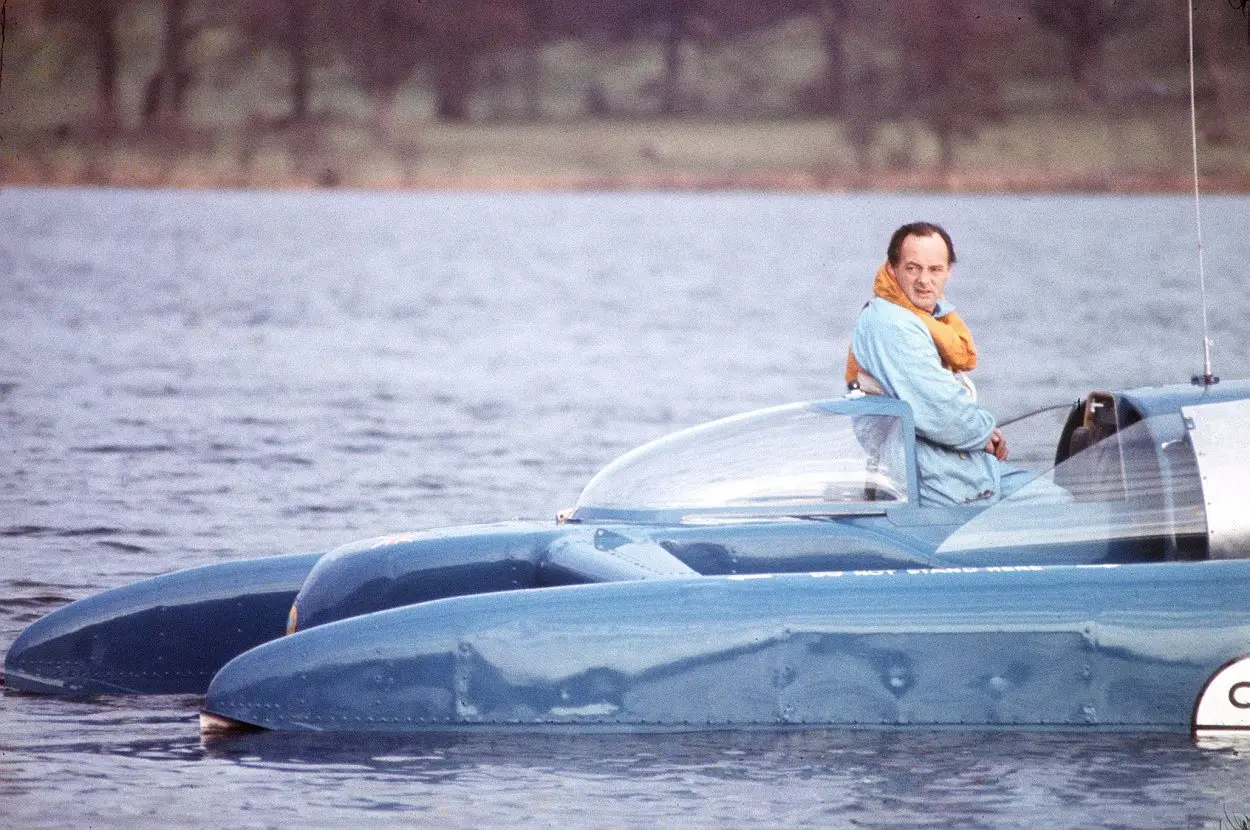The Ruskin Museum, with the support of the Campbell Family Heritage Trust, is currently in a battle with the Bluebird Project Ltd, to recover Donald Campbell’s Bluebird K7 for the public.
The Bluebird K7 is a jet engine hydroplane, in which Donald Malcolm Campbell, CBE, set seven world water speed records between 1955 and 1967.
On the 4th of January, 1967, Donald Campbell attempted to set a new record at Coniston Water in the Lake District, England. After achieving a speed of over 320 miles per hour (515 km/h or 278 kn), K7 crashed into the water, killing Donald Campbell instantly. Although the cause of the crash is debated, one of the most prominent theories suggest that K7 had exceeded its aerodynamic static stability limit.
A Royal Navy diving team identified the wreckage of K7 following the crash, however, the body of Donald Campbell was missing. At the time, the Campbell family instructed that the hull of K7 be left in situ as a memorial in the absence of finding Donald Campbell’s remains.
During the late 90’s, Bill Smith, an amateur diver, rediscovered the crash site and persuaded the daughter of Donald Campbell to allow him to raise K7 to the surface. According to the Campbell Family, this was in protest by some family members as the “Skipper and boat stay together.” However, Mr Smith proceeded in the recovery on the assurance that he would locate the remains of Donald Campbell.
In an announcement by Tracy Hodgson, the Director of the Ruskin Museum & Coniston Institute: “The Ruskin Museum applied to the Heritage Lottery Fund to have Bluebird K7 restored but two applications failed and eventually, The Ruskin Museum, The Campbell Family Heritage Trust, and Bill Smith (who were by now working under the umbrella of The Bluebird Project) decided to go it alone.”
“In December 2006, The Campbell Family Heritage Trust donated Bluebird K7 to the Ruskin Museum so that she would always be in the Museum system, and that her future would be protected. The donation was on the condition that K7 be restored to how she was on the morning of 4th January 1967 before the crash and that she be put on permanent display for public and educational benefit,” added Hodgson.
According to the Ruskin Museum, Mr Smith declared that he would restore K7 “at no cost to the museum”, and would use public donations to cover the cost of materials and labor.
The Ruskin Museum constructed a dedicated wing at a cost of over £750,000 for the exhibition of K7, however, according to Gina Campbell QSO (daughter of Donald Campbell): “Mr Smith has chosen not to return the restored K7 to the Ruskin Museum as was initially agreed. This has broken our trust and is not in the spirit in which the family gave him permission to raise K7 in the first place.”
In response to a deadlock, the Ruskin Museum has initiated legal proceedings (financed by a crowdfunder on Gofundme) against Mr Smith and The Bluebird Project LTD to recover K7 for the public.
In a press release issued by the Ruskin Museum, Jeff Carroll, said: “It is with huge frustration and disappointment that the Trustees of The Ruskin Museum find themselves in the position of having to go to the public to help Bring Bluebird Home. In 2006, it was with great pride and also humility that the Ruskin Museum accepted the kind donation of Bluebird K7 from the Campbell Family Heritage Trust via a Deed of Gift.”
He added: “An agreement was made between Bill Smith and The Campbell family that the restoration of Bluebird K7 would be a charitable project, using The Ruskin Museum’s status as a registered Charity to raise money from the public via donations, and a volunteer workforce would be used to carry out the work. I don’t think anyone would dispute the level of skill and dedication the volunteers have shown in bringing K7 back to life.”
In a response on X (Twitter), Bluebird Project said: “BBP [Bluebird Project] has been saying for years this is screaming out for a mediation & the team has suggested it multiple times & said they’d be up for it. Still waiting but it’ll come one day”.
Header Image Credit : Alamy – Trinity Mirror





